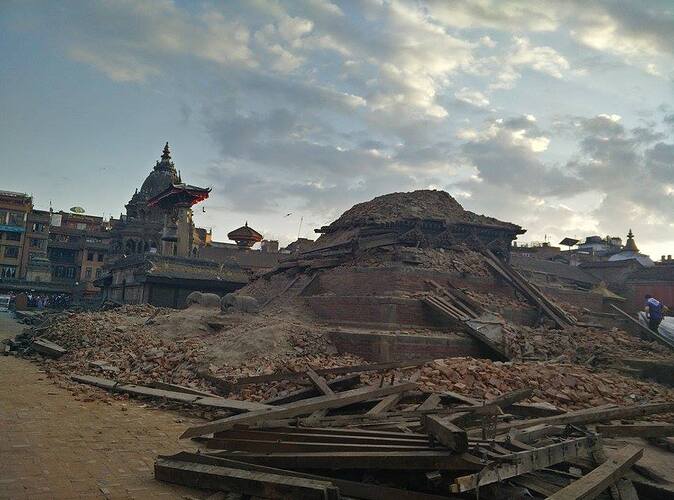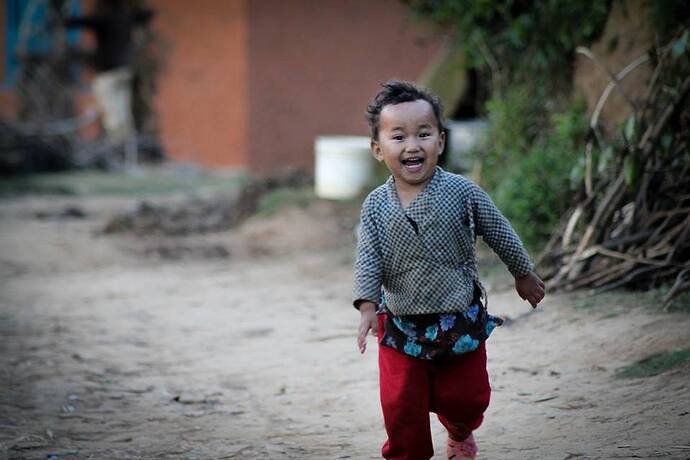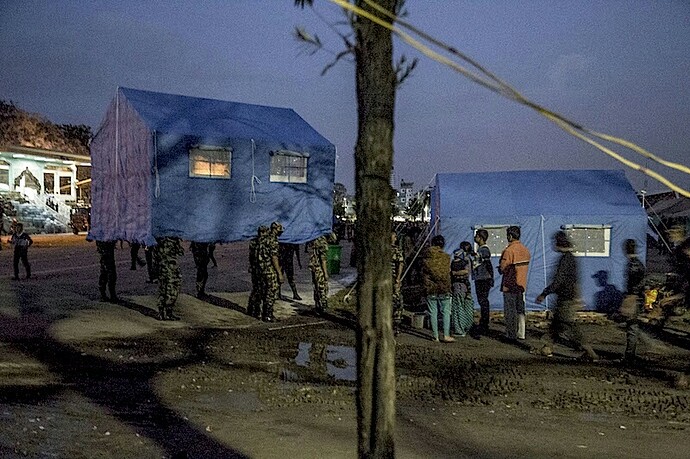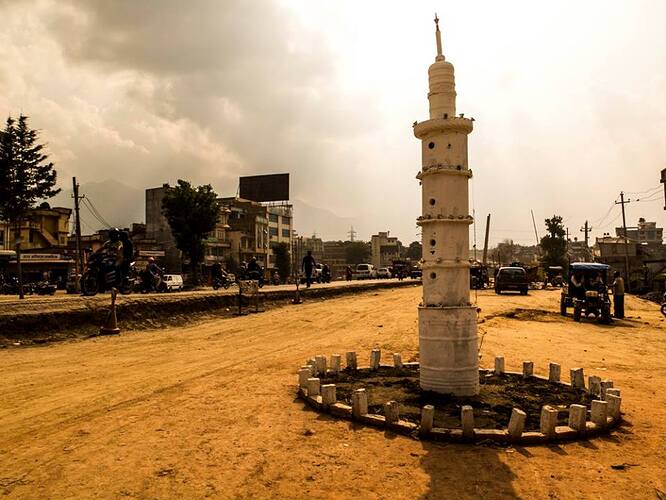After a recent conversation with @Abhinav_Thakur who pointed out a need for a better and more sensitive way of documenting (specially photographing) grief and devastation of the earthquake in Nepal, I asked few of my friends who are involved in the profession and art of photography how this can be done, to which I received some valuable and insightful comments.
I sent everyone one question and then asked few more depending on the response in some cases – the questions are all in bold.
What do you think is a more sensible/appropriate way of photographing the devastation that ensued after earthquake (including during relief work)?
---------------
RISHI AMATYA
“Photographing during a disaster is always challenging task - you have to capture the destruction in a way that speaks about the calamity without belittling the people/community facing its wrath.
I felt it was very tricky for me. I am studying heritage and the loss of the heritage structures were hard for me to bear. It doesn’t mean that I care less about human cost. I do. The loss of human life coupled with the loss of our heritage was too much for me.
So when I photographed the destruction I tried to portray what people lost during the quake. They lost a part of their identity, their cultural sense and for some of them, their livelihood. I tried to photograph that. And, also how the community and the local people mobilized in no time to save people who were buried in the detritus and saving the gods they’ve prayed too all their lives. Sometimes us commoners have to rescue the gods, it seems. I tried to photograph that. And the bonding, and a sense of urgency that was displayed during those chaotic times.
All these make up for a tricky photography subjects. You cannot just go there and photograph and then leave without helping. So, I did my part. Stood guard in the Mangal Bazaar few hours about the first quake. And, then went there regularly to help clearing the debris, helping to make an inventory of the stuffs we recovered from the loss. The DOA and KVPT will probably use those images when they will start reconstructing the sites there. Still volunteering for them when time permits."
You can follow him on twitter: @mt_ris
---------------
SHASHANK SHRESTHA
“I’d say don’t let taking a good photo get in the way of being a good human. Help out… a picture is not worth being a douche bag. Apart from that, I’d love to see more images of hope now onwards. Also, try to capture all sides of the story. The basics approach: Wide shot - medium shot - close up.
Also, do not stage anything. Capture as is. People have a lot of stories to share now… try to be a bit curious about their story than just taking their portrait.”
Would you take a photo of dead bodies being lifted, or you know people crying?
“Dead bodies no… not unless I have a good reason. People crying… yes.”
Why?
“Because it is a powerful image and it can lead the viewer to action. But before all you need to respect their privacy… if they don’t want you around don’t insist on it.”
You can follow Shashank on his Instagram HERE.
---------------
MANISH MALLA
“I think I cannot exactly point out an appropriate way of photographing the devastation that ensued after the earthquake. I have not captured devastation scenario but was in various places for relief work. At the most, I tried capturing resilience sprit of the people, struck by devastation.”
“During such vulnerable situation (especially when people are traumatized) it was hard to take photographs. I always made sure that I was not invading their personal space during my visits to different camps (temporary shelters). Whenever and wherever I was taking photographs of people I had short conversation with them to know their story and experience during devastation. Asking for their permission was what I always did.”
You can find more of his photographs album-ed Resilience Amidst Devastation HERE.
---------------
ALISHA ADHIKARI
"The photos I found the most compelling after the earthquake were the ones that showed people going about their day doing things inspite of and also because of the earthquake. I particularly remember two photos: one was of a woman praying to a statue amongst the ruins in Bhaktapur and the other one was of two little kids playing with their plates while lining up for food being handed out. I think these photos stuck because ultimately they both captured the small moments that occurred even when it seemed like so much was lost. They made me realise there was a lot left too.
I realise that there are equally valid reasons for photos that show dead bodies, blood and panick but I found them hard to look at. But maybe that’s the point. With relief work, photography related or otherwise, I think it should ultimately be about the people you’re helping and not about you helping them."
You can follow her on Tumblr HERE.
---------------
SANJANA SHRESTHA
“I think the idea is to focus on what remains, and what can be built back. What remains is dignity and it’s important to show that. As for photographing children, explaining to children and their families why he/she is being photographed and how it is going to be used is extremely important.”
What about photos where people are crying, standing in front of the rubbles?
“Initially those photos might make for great content but for me, my litmus test is to put myself in their shoes. Those kind of photos might work for showing the circumstances but as a photographer who works for a humanitarian organization, I always put myself in that persons’ shoes. It’s my litmus. What if it was me in that picture. Personally, having worked in humanitarian situations before, I am amazed at the ability for people to bounce back. that’s where I focus.
I end up not submitting a lots of photos I take because I put myself in their shoes when I am processing those photos.”
You may have seen a lot of relief related photos in social media, what is your take on this?
“Like everything in social media, it’s a bane and a blessing. Just like the traffic lights, it’s your choice whether you want to follow the rules or not.”
---------------
ROCKY PRAJAPATI
“My opinion about photographing the devastation would be - we should of course do photography about the recent devastation. This should not just be for your portfolio but to ensure a record as history for the future. Meanwhile, we should also have to be capable of showing its beautiful parts that has survived. We also should let the world know that Nepal is not all gone and the best effort that people did during the rescue and the fast relief management. Again, we should also know the ethics of photographing the sensitivity of the situation and the state of people’s own respect and dignity. What I found during all these weeks few people don’t even know of doing journalism in such a sensitive issue. People should learn and study photojournalism before they decide they are photojournalist or photographer.”
But what about those saying “we are doing this for documentation” or to those who ask for photographic evidence for fund raising intentions?
“True we need documentation for fund raising, I’m not saying we should not take any picture but my concern is how you want it to be presented. I just request people to be responsible and sensitive to spread their message.”
I saw your rescue video – what was it like shooting it.
“The footage was incomplete because I couldn’t shoot it complete for me at that moment her life was much worthy than the footage so I help others to dig her out."
Do you remember what you felt the instant you put down your camera and went to help?
I thought of continuing to shoot with one hand but the next aftershock made people ran away. And one of a guy had guts to be there that pull me to help him dig her out."
You can find the rescue video that his team shot HERE (They donated the money that they got to relief effort.)
---------------
KSHITIZ MATRAI
“This time around, I felt like I was one of them – “the victims”. For a while I was not sure if I would have a place for myself. It is not that I haven’t taken photos of emotional situations but this was different. I came to realize how sensitive this situation is. I realized, I am not taking their photograph but my photograph was being taken!"
"It is about how to take a photo. Nowadays, everyone owns a camera but that does not necessarily mean they know the ethics behind it.”
You can follow him on Tumblr HERE.
---------------
AAYUSH NIROULA
“Professionals aside, I think basically while taking pictures one has to be aware of why they are doing it. The earthquake is a historic thing, it is obvious that people would want to keep a record of it. But you’d have to be very sensitive about it. Try and be discreet and not shove cameras into the face of the people. While photographing relief perhaps try not to stall or obstruct the work or get in the way. And keep shots to a minimum.”
---------------
EVA PIVAC
“Hmm, not an easy question. I think there is no right or wrong, in my opinion one should take pictures of things/people that emotionally affect him/her. For me personally, I like finding beauty in ordinary things. In the eyes and smiles of the people, in colours that are still there, even though there are cracks… Difficult to explain…”
Was it particularly difficult or easy for you as a foreigner to take photographs at this time?
“Sometimes it was difficult, because it was very emotionally demanding. For example, when I visited Swayambu, I couldn’t even take pictures. But, when I saw something positive or beautiful despite the devastation surrounding it, it was very rewarding. I had to take those! To remind myself that not everything is so sad.”
You can find more of her captures album-ed Day After Yesterday HERE.
---------------
PRANAYA STHAPIT
“People have seen enough destruction, now I want to see people doing something about it. Talking about a photo composition, I want to capture tired and frustrated face, however continuing their job without any complaints. I haven’t taken any photos since earthquake but I plan to take photos of rebuilding Nepal.”
---------------
What did I learn from all their experiences? Photographing is a very subjective experience - but the code of ethics is something that you have to draw the line on your own and be ready to face the consequences. You can decide whether you want your photograph to make a difference or perpetuate dependency, voyeurism, and victimization. You have the choice to use your camera to tell a story and capture a moment or trap the person into a stereotypical image. You have to make the decision to put down the camera when you are needed - not as a photographer but as a human being.
I was recently gifted a camera by my brother which I left behind throughout this month of earthquake because I knew I was not ready - professionally and personally - to take this responsibility. Camera is an amazing invention - and it is important that this invention is used to not only capture but respect a moment.



